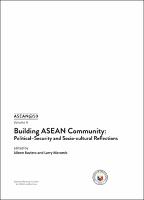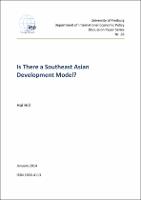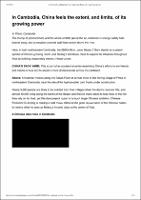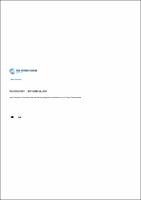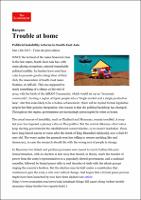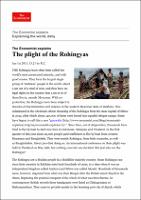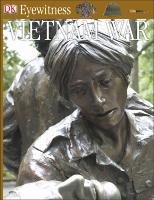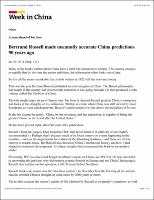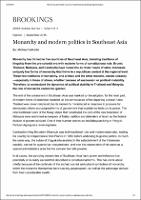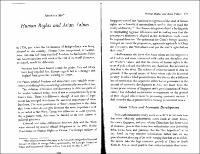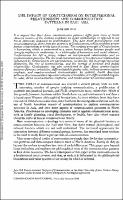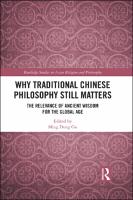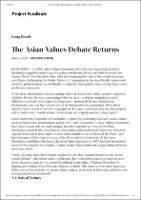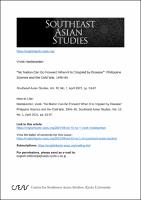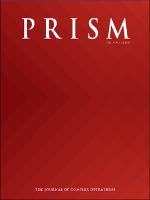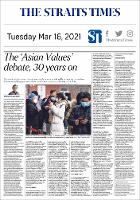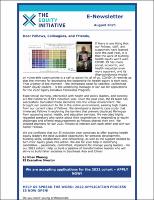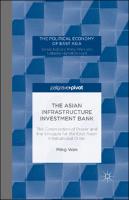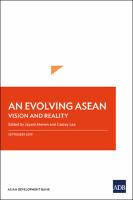Browsing by Submit Date
Now showing items 61-80 of 229
-
ASEAN @50Volume 4: Building ASEAN Community: Political-Security and Socio-cultural Reflections
(ERIA, 2017)
ASEAN has gradually built, on the basis of both shared interests and common principles and norms, various practices and mechanisms that helped prevent conflict among its members and allowed it to play an autonomous role in shaping the regional security architecture. Overcoming the member states' preoccupation with their own national concerns to give way to advocacy of collective interests has remained difficult, but progress is being made. Part A of this volume looks at the processes and dynamics, challenges, and opportunities of ASEAN ... -
Is There a Southeast Asian Development Model?
(Department of International Economic Policy Institute for Economic Research University of Freiburg, 2014)
The 10 states of Southeast Asia have combined to form the developing world’s most successful and durable regional grouping, the Association of Southeast Asian Na-tions, ASEAN. Economic integration among them is high and increasing. The ambi-tious ASEAN Economic Community is scheduled to take effect from December 2015, and should further accelerate this integration. But the socio-economic and institution-al disparities among them are also very large. This paper therefore asks the ques-tion, does it make sense to contemplate a ‘Southeast Asian ... -
In Cambodia, China feels the extent, and limits, of its growing power
(Washington post, 2015) -
How Countries in Southeast Asia are Working Together to Accelerate Human Capital Development
(THE WORLD BANK, 2019) -
Trouble at home: Political Instability Southeast Asia
(The Economist, 2015) -
The Economist explains_ The plight of the Rohingyas
(The Economist, 2015) -
Eyewitness: VIETNAM WAR
(DK Publishing, Inc.)
The Vietnam War remains one of the most heroic and heartbreaking events in history. This definitive guide charts the unforgettable story of the world's first televised war. Hundreds of insightful images and a compelling narrative combine to chronicle this catastrophic conflict.?? From 1955, the communist government of North Vietnam waged war against South Vietnam and its main ally, the USA. Over the course of two decades of hostility and warfare, the number of casualties reached an incomprehensible three million people. Detailed descriptions of ... -
Revisiting the Asian Values Argument used by Asian Political Leaders and its Validity
(Indonesian Quarterly, 2004) -
A man ahead of his time: Bertrand Russell made uncannily accurate China predictions 90 years ago
(Week in China, 2011) -
Monarchy and modern politics in Southeast Asia
(Brooking Institution, 2015) -
Human Rights and Asian Values
(Carnegie Council on Ethics and International Affairs, 1997) -
The impact of Confucianism on interpersonal relationships and communication patterns in east Asia
(Communication Monographs, 1988)
It is argued that East Asian communication patterns differ from those of North America because of the Eastern emphasis on social relationships as opposed to the North American emphasis on individualism. This East Asian preoccupation with social relationships stems from the doctrines of Confucianism, which considers proper human relationships to be the basis of society. The cardinal principle of Confucianism is humanism, which is understood as a warm human feeling between people and strongly emphasizes reciprocity. As a philosophy of humanism and ... -
Why traditional Chinese philosophy still matters: the relevance of ancient wisdom for the global age
(Routledge/ Taylor & Francis Group, 2018) -
The Asian Values Debate Returns
(Project Syndicate, 2018) -
“No Nation Can Go Forward When It Is Crippled by Disease”: Philippine Science and the Cold War, 1946–65
(Center for Southeast Asian Studies, Kyoto University, 2021)
This article outlines a notion of postcolonial Philippine science. First, it touches on the links between science, medicine, the Cold War, and nation building. Second, it examines the niche occupied by applied sciences, particularly nutrition, agriculture, and medicine, in nation building. Between 1946 and 1965, Philippine presidents understood science functionally, in terms of harnessing the country’s natural resources for economic development; and strategically, in terms of the Philippines being a regional leader of the free world in Southeast ... -
PRISM
(the Institute for National Strategic Studies at the National Defense University, 2021)
The global COVID-19 pandemic of 2020-2021 has catalyzed a re-examination of what national security consists of, and what responsibilities the world’s armed forces must or should assume to meet such non-military challenges. Yet the competition between the United States and its adversaries has intensified, requiring that the national security enterprise retain traditional capabilities while keeping up with the fierce pace of technological innovation. PRISM V.9,N.2 authors address the emerging challenges armed forces must meet, offer perspectives ... -
The Asian Value Debates - 30 years on
(The Straits Times, 2021) -
EI Newsletter: August 2021
(The Equity Initiative, 2021-08) -
An Evolving ASEAN: Vision and Reality
(Asian Development Bank, 2019)
The formation of ASEAN in 1967 was originally driven by political and security concerns. In the decades that followed, ASEAN’s scope evolved to include an ambitious and progressive economic agenda. In December 2015, the ASEAN Economic Community (AEC) was formally launched. Although AEC has enjoyed some notable successes, its vision of economic integration has yet to be fully realized. The publication reviews the evolution of ASEAN economic integration and assesses the major achievements. It also examines the challenges that have emerged during ...

